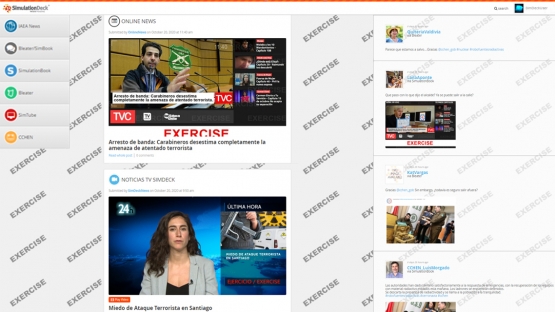It is 9:35 in the morning and the computer screen, previously blank, is now flooded with social media posts. “A group of terrorists has stolen #radioactive sources in Santiago. Nobody should leave their homes!” Hundreds of similar posts appear on the various platforms of the social media simulator ꟷ mimicking Twitter, Facebook and YouTube. Some fictitious commenters ask for answers, others spread false news and rumours. Images of radioactive material go viral. Behind their screens, in Santiago de Chile, public information officers at the Chilean Nuclear Commission (CCHEN) start going through the waves of information, testing their capacity to respond during a real emergency.
This social media simulator exercise, which took place last month, was developed by the IAEA in coordination with CCHEN. The made-up scenario was simple: a van carrying radioactive material for industrial use was stolen in the capital Santiago. But the reaction in the media, false information, panicked social media users and some local officials sending out confusing messages made it all the more complex, rendering the communicators’ job more difficult. CCHEN’s biggest challenge during the exercise? To respond in a timely, clear and coordinated manner to ease the panic and, potentially, save lives ꟷ key components of emergency communication.
“Experiences like this undoubtedly help to strengthen our capacity to respond to a possible emergency,” said Rommy Casanueva, Public Information Officer in charge of social media at CCHEN. “During the exercise, we received a lot of information in a very short time, so it was a good way to experience what happens in a real emergency, when one has to give a timely and adequate response to the public.”
Check this photo album to see what the exercise looked like.
If you want an effective response in an emergency, you need social media.








